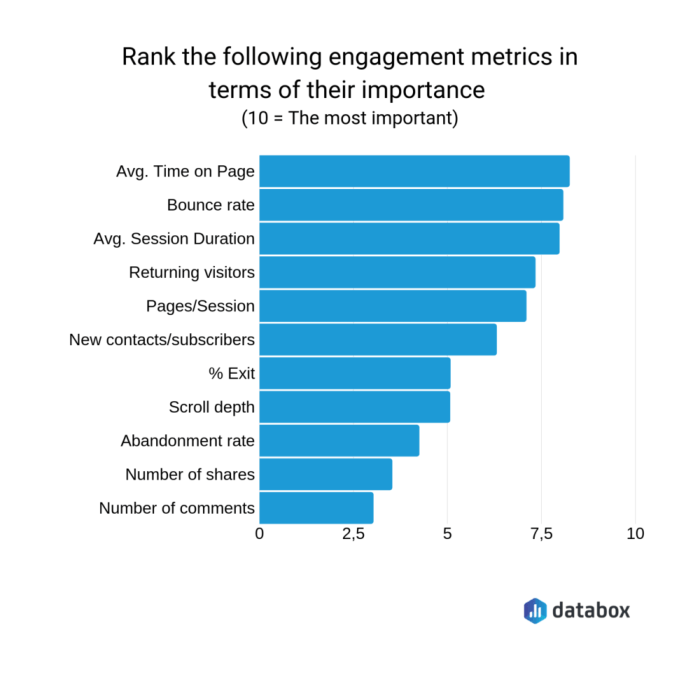Understanding Content Engagement Metrics takes center stage in the digital realm, offering businesses valuable insights to enhance their strategies. Get ready to explore the world of metrics with a fresh perspective that’s sure to keep you hooked!
From likes to click-through rates, each metric paints a unique picture of audience behavior, guiding businesses towards content success.
Introduction to Content Engagement Metrics

Content engagement metrics are data points that measure how users interact with a piece of content, such as a blog post, video, or social media post. Understanding these metrics is crucial for businesses as it helps them evaluate the effectiveness of their content strategy and make informed decisions to improve engagement and reach their target audience.
Popular Content Engagement Metrics
- Pageviews: The number of times a page is viewed by users, indicating the level of interest in the content.
- Time on Page: The average amount of time users spend on a page, showing how engaging the content is.
- Bounce Rate: The percentage of visitors who leave a website after viewing only one page, indicating the relevance and quality of the content.
- Click-Through Rate (CTR): The percentage of users who click on a link, ad, or call-to-action, showing the effectiveness of the content in driving actions.
- Social Shares: The number of times a piece of content is shared on social media platforms, reflecting its popularity and reach.
Types of Content Engagement Metrics
Content engagement metrics play a crucial role in understanding how audiences interact with content. By analyzing different metrics, businesses can gain valuable insights into audience behavior and tailor their content strategy accordingly.
Likes
Likes are a common metric used to measure audience engagement. They indicate that the audience found the content valuable or interesting enough to show their approval.
Shares
Shares are a powerful indicator of audience engagement as they show that the content resonated with the audience enough for them to share it with their own networks. It can significantly increase reach and visibility.
Comments
Comments provide insights into the audience’s thoughts, opinions, and reactions to the content. They can help businesses understand what resonates with their audience and what improvements can be made.
Click-Through Rates
Click-through rates measure how many people clicked on a link within the content. It indicates the effectiveness of the content in driving traffic to a specific page, which can be valuable for businesses looking to convert leads into customers.
Examples of Leveraging Metrics
- By analyzing likes, businesses can identify the type of content that resonates with their audience and create more of it to increase engagement.
- Tracking shares can help businesses understand which platforms are most effective for reaching their target audience and optimize their distribution strategy.
- Engaging with comments can help build relationships with the audience and gather valuable feedback for future content improvements.
- Monitoring click-through rates can help optimize content placement and design to improve conversion rates and drive more traffic to key pages.
Key Factors Affecting Content Engagement: Understanding Content Engagement Metrics
When it comes to content engagement metrics, there are several key factors that can significantly influence how your audience interacts with your content. Factors such as the quality of the content, the timing of posts, and the relevance to the target audience all play a crucial role in determining the level of engagement.
Quality of Content
The quality of your content is one of the most important factors affecting engagement metrics. High-quality content that is well-written, informative, and visually appealing is more likely to capture the attention of your audience and keep them engaged. Make sure your content is relevant, up-to-date, and provides value to your audience to encourage interactions such as likes, shares, and comments.
Timing of Posts
The timing of your posts can also impact content engagement. Posting at times when your target audience is most active online can increase the visibility of your content and attract more engagement. Use analytics tools to determine the best times to post based on when your audience is most likely to be online.
Relevance to Target Audience
Understanding your target audience and creating content that resonates with their interests, needs, and preferences is essential for driving engagement. Tailor your content to address the pain points of your audience and provide solutions or valuable insights that they can relate to. Personalizing your content can help you build a stronger connection with your audience and encourage them to engage with your posts.
External Factors and Trends, Understanding Content Engagement Metrics
External factors such as current events, trends, or industry news can also impact content engagement. Stay updated on what’s happening in your industry and leverage relevant trends or events to create timely and engaging content that captures the interest of your audience. By aligning your content with external factors, you can increase the likelihood of driving higher engagement levels.
Optimizing Content for Better Engagement
To optimize your content for better engagement, focus on creating high-quality, relevant, and timely content that resonates with your target audience. Experiment with different types of content formats, such as videos, infographics, or interactive posts, to keep your audience engaged and interested. Monitor your content performance regularly and adjust your strategies based on the insights gathered to continuously improve engagement levels.
Tools for Measuring Content Engagement

When it comes to tracking and analyzing content engagement metrics, there are several popular tools available that can provide valuable insights into how your content is performing. These tools can help you gauge the effectiveness of your content strategy and make data-driven decisions to improve engagement.
Google Analytics
Google Analytics is one of the most widely used tools for measuring content engagement. It allows you to track a wide range of metrics, including page views, bounce rate, time on page, and conversion rates. With Google Analytics, you can gain in-depth insights into how users interact with your content and identify areas for improvement.
Social Media Insights
Social media platforms like Facebook, Instagram, and Twitter offer built-in analytics tools that allow you to track engagement metrics specific to each platform. These tools provide data on likes, shares, comments, and reach, giving you a comprehensive view of how your audience is engaging with your content on social media.
Comparison of Different Tools
While Google Analytics provides a holistic view of your website’s performance, social media insights are more focused on engagement within specific platforms. Google Analytics offers detailed data on user behavior and conversions, while social media insights give you real-time engagement metrics on social platforms. Each tool has its unique features and functionalities, and using them in conjunction can provide a comprehensive understanding of your content engagement strategy.
